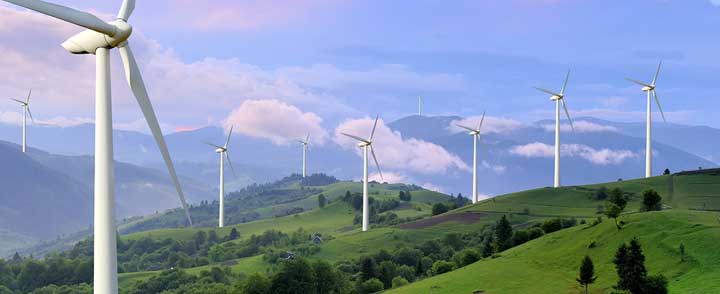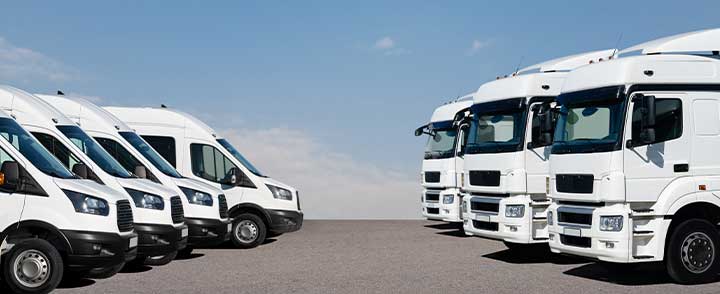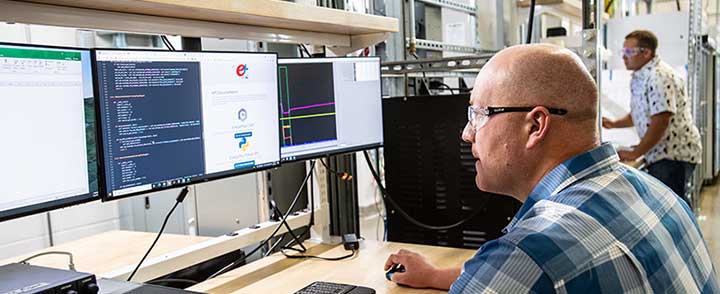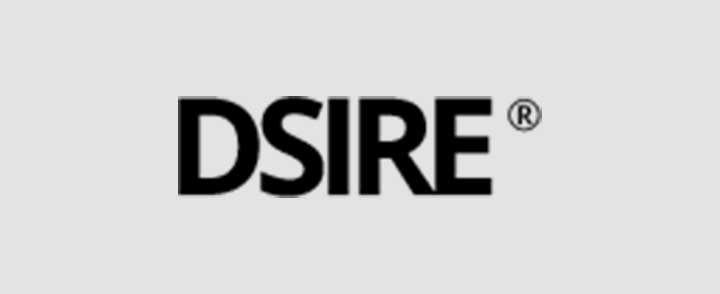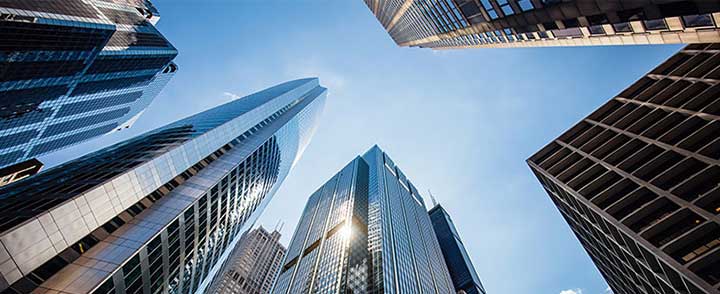Inflation Reduction Act Activation Guide: Building Energy Efficiency
Building Energy Efficiency
Inflation Reduction Act Activation Guide
Produced by EDF in collaboration with
Companies with high energy footprints are most likely to benefit from the IRA’s credits and deductions for energy saving building technologies.
Companies in these industries tend to have high building energy intensities, but any company that owns or has a long-term lease for a commercial building has an opportunity to benefit from the IRA.
Sources: Deloitte Analysis, Energy Star
Key Relevant Provisions
§179D and §48/48E are the key provisions to know for commercial building energy efficiency, offering up to $5/sq ft deduction for energy reductions of 25%+ and up to 30% for heat pumps.
§179D: Energy Efficient Commercial Buildings Deduction
Provision
Provides a tax deduction for energy efficiency improvements to commercial buildings, such as interior lighting; heating, cooling, ventilation, and hot water; and building envelope.
Key Takeaways
- Lowers the qualification threshold from 50% energy efficiency improvement to 25%
- Increases deduction amount from $1.80/sq ft to sliding scale of $2.50-$5.00 based on % reduction in energy use, provided prevailing wage and apprenticeship requirements are met
- If prevailing wage and apprenticeship requirements are not met, deduction amount is a sliding scale of $0.50-$1.00/sq ft
- Makes deduction permanent and removes lifetime limit
- Now eligible for designers of all tax-exempt facilities
- Likely to be more commonly taken as a deduction due to phase out of bonus depreciation from 2023-2026
§48/§48E: Business Energy Investment Tax Credit (ITC)
Provision
Provides a tax credit of up to 30% of the upfront cost of a “qualifying energy property” such as a solar, wind electricity generation and standalone battery storage projects.
Key Takeaways
- Covers a variety of renewable energy technologies such as geothermal heat pump projects for commercial buildings
- Employs a two-tier structure with a base rate of 6% and a bonus rate of 30% for either (1) meeting prevailing wage and apprenticeship requirements, or (2) producing a maximum output of <1 megawatt of electrical or thermal energy
- Offers an additional 10% for using domestic steel, iron, and manufactured products, and another 10% for technologies installed in “energy communities”
- Can be stacked on top of §179D deductions
Note: Companies can also take advantage of the §30C tax credit for alternative fuel fueling property by installing clean vehicle charging in their buildings. See IRA Fleet Electrification Activation Guide for more details.
Unless otherwise specified, all references to “Section” in this presentation are to the Internal Revenue Code of 1986, as amended (IRC).
Sources: Deloitte Analysis, Geo Exchange
The §179D tax deduction applies to three categories of energy efficiency improvements for buildings that each contain a suite of potential technologies for companies to install.
Heating, Cooling, Ventilation & Hot Water Systems
Heating
- Heat Pumps (Air-Source and Geothermal)
- Heat Recovery & Thermal Storage
- Smart Thermostats
- Variable-Speed and High-Efficiency Motors
Cooling
- High-Efficiency Chillers
- High Efficiency Air Conditioning
Ventilation
- Ventilation Fans
- Air Barriers/Duct Sealing
Hot Water Systems
- Electric Water Heaters
- Heat Pump Water Heaters
- Solar Water Heaters
- High-Efficiency Gas Storage Water Heaters
- Smart Water Heaters
Building Envelope
Roof
- Roof Insulation
- Green and Cool Roofs
- Outdoor Surface Reflectance
Wall
- Wall Insulation
- Green Facades
- Reduced Air Infiltration
Windows
- Window Retrofits
- Storm Windows
- Dynamic Glass/Glazing
- Advanced Window Coatings
- High Performance Windows
Note: Not an exhaustive list of technologies
Sources: Deloitte Analysis, US DOE, USAID, Energy.gov, UC Berkeley, US Green Building Council
The Business Case
Most commercial building energy efficiency upgrades pay for themselves in less than a year and can generate ongoing cost savings.
Assumptions
- 50,000 sq ft building
- 22.5 kWh/sq ft building energy footprint
- $0.125/kWh building energy costs
- $1.05/sq ft cost of standard lighting retrofit
- $20,900 cost of heat pumps for 16,000 sq ft building
- No retail cost premium for ventilation fans
- $0.13/sq ft cost for 179D certification study
- 21% effective tax rate
- 40% reduction in energy costs due to energy efficiency upgrades
- $4.00/sq ft §179D deduction value (based on 40% improvement and meeting prevailing wage and apprenticeship requirements)
- 10% reduction in building operating costs due to energy efficiency upgrades
- 30% credit for heat pump costs from §48/48E
- 8% discount rate for NPV calculation
Sources: Deloitte Analysis, EIA, Buildings IOT, EIA, Constellation, EPA, Remodeling Calculator, Energy Star, US GSA
The Climate Case
Installing energy efficient technologies could help reduce commercial building energy emissions by an estimated 46%, or 200 MT CO2 annually for a typical building.
Example Commercial Building (50,000 sq ft) GHG Emissions Footprint by Source Pre- and Post-Energy Efficiency Investments (in MT CO2)
Assumptions
Example Building Specifications
- 50,000 sq ft building
- 22.5 kWh/sq ft building energy usage
- 0.855 lbs CO2/kWh emissions factor
Energy Efficiency Improvements by Source Type
- Lighting efficiency improvement potential estimated to be 90% by converting to LED lightbulbs
- HVAC efficiency improvement potential estimated to be 50% by converting to heat pumps, high efficiency ventilation fans, and solar water heaters
- Cooking and refrigeration efficiency improvement potential estimated to be 20% by converting to more efficient refrigerators and commercial ovens
- Other efficiency improvement potential estimated to be 30% by converting to high efficiency enterprise servers and electronic devices
- Does not include insulation, which can provide significant additional gains in energy efficiency
Scope & Disclaimers
- Does not consider embedded carbon from construction in the CO2 footprint, which can have a significant impact on overall building lifetime emissions
- Exact emissions reduction potential will depend on grid decarbonization, specific technologies installed, and existing technologies, among other factors
Sources: Deloitte Analysis, EIA 1, EIA 2, EIA 3, Buildings IOT, Better Buildings, US DOE, Energy Star
Deduction Overview
Provision Description:
Provides a tax deduction for energy efficiency improvements to commercial buildings (new or retrofit)
Period of Availability:
Permanent; new rules begin in 2023
Incentive Type:
Business tax deduction
New or Modified Provision:
Modified and extended (revised efficiency thresholds and deduction amounts, extended timeline)
- Nontransferable
- No Direct Pay Eligibility
- Stackable with other Credits
- No Limit to Size of Total Deduction
Deduction Amount:
*Deduction amount is not to exceed the cost of energy efficiency property; amount is adjusted annually for inflation
**Bonus deduction is awarded for meeting prevailing wage and apprenticeship requirements
Eligibility Requirements
Organization Types and Usage:
- Owners and long-term lessees of commercial buildings
- Designers of energy efficient building property (architects, engineers) for tax exempt owners
- Tax-exempt owners of commercial properties, pending Treasury guidance on deduction
Energy Efficiency Requirement:
Minimum 25% improvement in building energy efficiency, relative to ASHRAE standards for new construction and prior energy use intensity for retrofits
Energy Efficiency Improvement Categories:
- Interior Lighting
- Heating, Cooling, Ventilation & Hot Water Systems
- Building Envelope
Available January 1, 2023 with no expiration date
How to Claim Deduction
- Engage a qualified third party (contractor or engineer licensed by the state where the building is located) to complete a 179D study by using IRS-approved energy software to model the energy performance of the buildings and improvements, compared to a reference building that meets ASHRAE 90.1 standards
- After installing energy efficiency upgrades, arrange for the same third party to complete a physical site visit to check energy efficiency improvements and sign Certification document
- Calculate potential 179D deduction based on energy efficiency improvements, compliance with prevailing wage and apprenticeship requirements, and cost of energy-efficiency commercial building property (EECBP) installations
Notes: Companies may choose to use Bonus Depreciation instead of the 179D deduction depending on project costs and their tax liability, but Bonus Depreciation is phasing out beginning in 2023 until reaching 0% in 2027.
Sources: Deloitte Analysis, P.L. 117-119, WH IRA Guidebook, IRS, IRC.
Credit Overview
Provision Description:
Provides a tax credit for investment in renewable energy projects
Period of Availability:
Projects beginning construction before 1/1/25
Incentive Type:
Investment tax credit
New or Modified Provision:
Modified and extended to include standalone energy storage with capacity of at least 5 kWh, biogas, microgrid controllers (20MW or less), and interconnection property for projects with 5MW or less
- Transferable
- Direct Pay (for tax-exempt)
- Not Stackable with 45 PTC for same project
- No Limit to # of Credits
- General Business Credit Terms Apply
Credit Amount (in % of investment cost):
- Prevailing Wage & Apprenticeship Bonus qualifies projects for 5x bonus multiplier times the base
- Domestic content bonus provides additional 10 ppt
- Energy community bonus and low-income bonus provide an additional 10 ppt and 20 ppt credit, respectively
Eligibility Requirements
Organization Types and Usage:
- Businesses that own or develop renewable energy projects
- Tax-exempt entities that fall under subtitle F of the IRC, Indian Tribal governments, rural electricity co-ops among others that own or develop renewable energy projects
Project Types:
Fuel cell, solar, geothermal, small wind, standalone energy storage, biogas, microgrid controllers, and combined heat and power properties. It includes solar powered heating and cooling as well as equipment that uses solar energy to illuminate the inside of a structure using fiber-optic distributed sunlight or electrochromic glass
Example project types (non-exhaustive):
- Fuel Cell
- Solar
- Energy Storage
- Wind
- Biogas
- Geothermal
Available for construction start dates between January 1, 2023 and December 31, 2024
How to Claim the Credit
- Fill out and file IRS Form 3468 or IRS Form 3800 to claim the ITC
- Review the initial IRS guidance on prevailing wage and apprenticeship requirements and the Environmental Justice Solar and Wind Capacity Limitation to assess opportunities for credit adders
- Review additional information regarding the ITC which can be found online using the Database of State Incentives for Renewables & Efficiency (DSIRE)
Sources: Deloitte Analysis, P.L. 117-119, WH IRA Guidebook, IRC.
Credit Overview
Provision Description:
Provides a technology-neutral tax credit for investment in facilities that generate clean electricity. Replaces the ITC for facilities generating electricity from renewable sources
Period of Availability:
Facilities placed in service after 12/31/24. Phase-out starts the later of a) 2032 or b) when U.S. GHG emissions from electricity are 25% of 2022 emissions or lower
Incentive Type:
Investment tax credit
New or Modified Provision:
New
- Transferable
- Direct Pay (for tax-exempt)
- Not Stackable with 45 PTC for Same Project
- No Limit to # of Credits
- General Business Credit Terms Apply
Credit Amount (in % of investment cost):
- Prevailing Wage & Apprenticeship Bonus qualifies projects for 5x bonus multiplier times the base
- Domestic content bonus provides additional 10 ppt
- Energy community bonus provide an additional 10 ppt and 20 ppt credit, respectively
Eligibility Requirements
Organization Types and Usage:
- Businesses that own or develop renewable energy projects
- Tax-exempt entities that fall under subtitle F of the IRC, Indian Tribal governments, rural electricity co-ops among others that own or develop renewable energy projects
Project Types:
Facilities that generate electricity with a GHG emissions rate that is no greater than zero and qualified energy storage technologies
Construction Start Date & Phase-Out:
- Construction start date dictates eligibility for ITC. However, ITC is claimed in the tax year that the facility is placed in service (IRS Guidance on construction start date)
- The credit will be phased out as the U.S. meets its GHG emissions reduction targets. (Facilities can claim 100% of credit in the first year after reaching the target, 75% in Year 2, 50% in Year 3, and 0% in Year 4)
Available for facilities placed in service between January 1, 2025 and likely 2032 and beyond
How to Claim the Credit
- Fill out and file IRS Form 3468 or IRS Form 3800 to claim the ITC
- Review the initial IRS guidance on prevailing wage and apprenticeship requirements to assess opportunities for credit adders
- Review additional information regarding the ITC which can be found online using the Database of State Incentives for Renewables & Efficiency (DSIRE)
Sources: Deloitte Analysis, P.L. 117-119, WH IRA Guidebook, IRC.
Every function has a role to play to take advantage of the IRA to support improvements in commercial building energy efficiency.
- Assess building energy efficiency against corporate strategy
- Identify priority buildings and technologies for energy efficiency upgrades
- Calculate projected abatement potential from building energy efficiency and compare against goals and strategy
- Assess against alternative abatement projects to calculate opportunity cost of investment
- Refresh business case to include IRA incentives
- Conduct ROI analysis for priority buildings and technologies to optimize spend
- Assess financial impacts of retrofit vs. new build and company-driven vs. energy-as-a-service provider-driven installations
- Assess eligibility for §179D and §48/48E and calculate projected value; compare §179D value against bonus depreciation value
- Monitor IRS website for forthcoming additional guidance on energy use intensity baseline measurement for retrofits, finalized IRS Form 7205 required for §179D, and IRS Form 3468 or IRS Form 3800 to claim the ITC (§48 & §48E)
- Engage licensed third party to complete §179D study and provide Certification
- Identify specific energy efficiency technology vendors to purchase from
- Identify additional federal, state and local incentive structures
- While the comment period for the deduction closed on October 31, 2022, it is possible to engage the IRS and Treasury on aspects of §179D implementation
Credit: Environmental Defense Fund and Deloitte
This document was produced by Environmental Defense Fund in collaboration with Deloitte Consulting LLP. The views within the report are that of Environmental Defense Fund, and do not necessarily reflect the views of report partners or collaborators.This document contains general information only and Deloitte is not, by means of this document, rendering accounting, business, financial, investment, legal, tax, or other professional advice or services. This document is not a substitute for such professional advice or services, nor should it be used as a basis for any decision or action that may affect your business. Before making any decision or taking any action that may affect your business, you should consult a qualified professional advisor. Deloitte shall not be responsible for any loss sustained by any person who relies on this document.
About Deloitte
Deloitte refers to one or more of Deloitte Touche Tohmatsu Limited, a UK private company limited by guarantee (“DTTL”), its network of member firms, and their related entities. DTTL and each of its member firms are legally separate and independent entities. DTTL (also referred to as “Deloitte Global”) does not provide services to clients. Please see www.deloitte.com/about for a detailed description of DTTL and its member firms. Please see www.deloitte.com/us/about for a detailed description of the legal structure of Deloitte LLP and its subsidiaries. Certain services may not be available to attest clients under the rules and regulations of public accounting.Copyright © 2023 Deloitte Development LLC. All rights reserved. 36 USC 220506 Member of Deloitte Touche Tohmatsu Limited
Our Experts

Victoria Mills
Managing Director
Environmental Defense Fund
vmills@edf.org

Andrea Pereira
Climate Policy & Outreach
Environmental Defense Fund
apereira@edf.org
Sign up for Climate Policy News you can use
"*" indicates required fields

